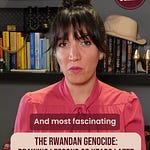I woke up to a clip going viral: President Donald Trump on his way to the Holy Land on Air Force One, asked if he’s going to heaven, saying probably not. “This might be as close as I get,” he joked, before pivoting to the ways he believes he’s made people’s lives better. It was disarming and oddly reflective. By the time he walked into Israel’s parliament a few hours later, the tone was set.
Inside the Knesset, the room felt like a cross between a victory service and a history class. The Speaker welcomed him with a wink about the teleprompter working this time. Trump stuck to it for long stretches, then colored the margins with the off-script asides that make headlines. He called this “the historic dawn of a new Middle East.” He praised Netanyahu as “not the easiest guy to deal with,” which is what makes him “great.” When protests flared in the gallery, security moved quickly and the speech rolled on.
There was a through-line designed for posterity: the Abraham Accords as scaffolding for everything that came after. He said Arab countries didn’t walk away during the war because of loyalty and because they made money. He turned to Jared Kushner and said, “Bring more in. No games,” which everyone in the room heard as Saudi Arabia. He promised Gaza would be “immediately demilitarized,” Hamas disarmed, and Israel secure “in any way, shape, or form.” He did not say how.
The off-script Trump flickered in and out. He told an anecdote about Miriam Adelson and teased her with the question, “Who do you love more, Israel or the United States of America?” He mentioned his daughter’s conversion to Judaism to marry Jared, adding he hadn’t seen that coming but that they’re happy, “otherwise we’ve got a big story.” He joked about Secretary of War Pete Hegseth being “straight out of central casting” and suggested many of his team could get rich making movies. He praised Secretary of State Marco Rubio (who is also still National Security Advisor right?) and joked about when they used to be rivals running for president. “Now look at us.” He asked Israel’s president on the spot to pardon Netanyahu, then caught himself and said, “By the way, that was not in the speech.”
Woven through the applause lines were bigger gambles. He talked about Iran the way a dealmaker talks about a rival across a table: Iranians “want to survive,” peace is possible, we’ll get there after “we get Russia done.” Steve Witkoff, the real-estate-guy-turned-envoy, got a shoutout for a marathon with Putin. He said they “ended eight wars,” a boast that will live or die in the fact-checks, but the point was the persona: the closer who ends eras.
It was also a day of raw emotion in Israel. Hostages came home. Many did not. On the other side of the fence, families watched prisoners walk out of Israeli jails, many in poor condition. My WhatsApp was full of friends trying to square relief with grief, hope with anger. One Gazan I’ve kept in touch with since 2023 told me he is “too tired and broke and homeless to celebrate.”
Hours later, Trump landed in Sharm el-Sheikh and the lighting changed from theater to fluorescent. President Sisi hosted a room where prize politics continued. In Jerusalem, Israeli leaders queued up to say out loud what Trump’s been chasing for years: the Nobel Peace Prize. In Egypt, Pakistan’s leader said he would nominate Trump. In Israel, top officials said they would too. Separately, Netanyahu said he would nominate Trump for the Israel Prize, the country’s highest civilian honor. The choreography mattered as much as the paperwork. It told you how the story is meant to be read: the peacemaker at the center of the frame.
Here is what wasn’t in the frame. Who disarms Hamas. Who polices Gaza next week. Who pays and who governs as homes become schools and roads again. Whether the Saudis can join an expanded Abraham Accords without something that looks and feels like a Palestinian state. This is the difference between ceasefire and peace.
If you’ve followed my reporting, you know I listen for the names tucked into the sentences. There were a few today. “New people” on the Palestinian side, Trump hinted, without saying who. My ears perked up. I’ll be making calls. And if you’re reading this and have a tip, my DMs are open.
For now, here’s how I’d translate the day without the theatrics. The Accords are the framework, Saudi Arabia joining is key, a Palestinian sovereignty pathway is the price of entry. Iran is both foil and possible future handshake, but the distance between rhetoric and a verifiable deal is wide. The hostages and prisoners exchange bought time and goodwill, but also risk. Reconstruction is where this either hardens into a peace process or dissolves back into grievance.
Did Trump make the case that he changed the region? In that room, yes. Did he answer the hard questions? Not yet. The real work starts when the cameras pack up.







